《Rfid:MIFARE and Contactless Smartcards in Application=射频识别:应用中的MIFARE和非接触式智能卡 影印版》
| 作者 | 2015 09 编者 |
|---|---|
| 出版 | 未查询到或未知 |
| 参考页数 | |
| 出版时间 | 没有确切时间的资料 目录预览 |
| ISBN号 | 无 — 求助条款 |
| PDF编号 | 820385518(仅供预览,未存储实际文件) |
| 求助格式 | 扫描PDF(若分多册发行,每次仅能受理1册) |
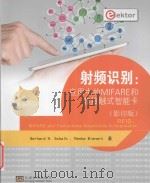
Preface13
1RFID Fundamentals17
1.1Introduction to RFID17
1.1.1 RF17
1.1.2 ID18
1.1.3RFID system classification19
1.1.3.1 Frequencies and transmission principles19
1.1.3.2 Applications20
1.2RFID system components22
1.2.1 Card(PICC)22
1.2.2 Reader(PCD)23
1.3ISO/IEC 14443 application example24
1.3.1 Public transport ticketing24
1.3.2 Employee identification cards25
1.3.3 Electronic passports and identity cards26
1.3.4 Other applications27
1.4Physical fundamentals27
1.4.1 Energy transmission27
1.4.2Data transmission from PCD to PICC29
1.4.2.1 Amplitude modulation29
1.4.2.2 Standard data rate(106 Kb/s)29
1.4.2.3 Higher data rates(up to 848 Kb/s)31
1.4.3Data transmission from PICC to PCD32
1.4.3.1 Load modulation33
1.4.3.2 Subcarrier modulation:Manchester encoding using ASK33
1.4.3.3 Subcarrier modulation:NRZ encoding with BPSK34
2 Overview of the Relevant Standards35
2.1ISO/IEC1444335
2.1.1 Part 1:physical properties36
2.1.2 Part 2:RF properties and signals37
2.1.3 Part 3:Card selection and activation38
2.1.3.1Type A:UIDs38
2.1.3.2 Type A:card activation40
2.1.3.3 Type A:SAK encoding42
2.1.3.4 Type A:collision-detection and conflict resolution44
2.1.3.5 Type B card activation46
2.1.3.6 Type B:Card activation parameters48
2.1.4Part 4:communication protocol49
2.1.4.1 Protocol activation49
2.1.4.2 T=CL protocol block structure56
2.1.5Information Block (I Block)56
2.1.5.1 Receive-ready Blocks (R Blocks)58
2.1.5.2 Supervisory Blocks (S Blocks)59
2.1.6Electromagnetic disturbance (EMD)61
2.1.6.1 Rest period62
2.1.6.2 Rest level63
2.1.6.3 Distinction between invalid card response and EMD63
2.1.6.4 The MFRC522 reader IC and EMD63
2.2ISO/IEC 10373-6 test methods64
2.2.1Test equipment65
2.2.1.1 Calibration coil65
2.2.1.2 Test PCD assembly65
2.2.1.3 ReferencePICC66
2.2.2 Tuning and calibration68
2.2.2.1Tuning68
2.2.2.2 Calibration68
2.2.3Measurements at the reader69
2.2.3.1 Range measurement69
2.2.3.2 Measurement effort69
2.2.4 Tests for Layer 3 and 470
2.3Near Field Communication (NFC)70
2.3.1 Introduction70
2.3.2NFC air interface71
2.3.2.1 NFC device as card71
2.3.2.2 NFC device as a reader71
2.3.2.3 NFC device inactive’mode72
3RFID Antenna Design73
3.1Theoretical Fundamentals73
3.1.1 Antenna as Resonant Circuit73
3.1.2 Transformer Model77
3.1.3 The Biot-Savart Law79
3.1.4 Optimal Antenna Size80
3.2Reader Antennas83
3.2.1Antenna Quality83
3.2.1.1 Data Transmission Bandwidth83
3.2.1.2 Stability Against Detuning86
3.2.2Electrically Conductive Surfaces in the Vicinity of the Antenna89
3.2.2.1 Ferrites90
3.2.3Balanced and Unbalanced Antennas92
3.2.3.1 Balanced Antenna93
3.2.3.2 Unbalanced Antenna96
3.3Card Antennas98
3.3.1 Standard Cards(ID-1)98
3.3.2 Tokens with Smaller Inlays(Smaller than ID-1)100
3.4Impedance Measurements with the miniVNA101
3.4.1 miniVNA User Software102
3.4.2Disadvantages and Limitations of the miniVNA102
3.4.2.1 Lack of Sign for Imaginary Numbers102
3.4.2.2 Lack of Calibration and Compensation102
3.4.3 How Do I Find the Correct Compensation?103
3.4.4 Coil Inductance Measurement105
4 Security and Cryptography109
4.1Protection Objectives109
4.1.1 Keeping Data Secure109
4.1.2 Data Integrity111
4.1.3 Privacy Protection112
4.2Attacks on Smartcards112
4.2.1Logical Attacks112
4.2.1.1 Unauthorized Reading of Data112
4.2.1.2 Unauthorized Manipulation of Data113
4.2.1.3 Replay’Attack114
4.2.1.4 ‘Relay’Attack114
4.2.1.5 ‘Man-in-the-Middle’Attack116
4.2.1.6 Denial-of-Service Attack116
4.2.2Physical Attacks116
4.2.2.1 Side Channel Attacks and Power Analysis116
4.2.2.2 Reverse Engineering118
4.2.2.3 Light and Laser Attacks119
4.2.2.4 Temperature and Frequency120
4.2.3 Combined Attacks120
4.3Cryptography120
4.3.1 Asymmetric Cryptography120
4.3.2 Symmetric Cryptography122
4.3.3 Block and Stream Cipher123
4.3.4 Encryption Standards:DES and AES124
4.3.5 DES Cascading125
4.3.6Operation mode127
4.3.6.1 Electronic Code Book(ECB)127
4.3.6.2 Cipher Block Chaining(CBC)127
4.4Application of Cryptography129
4.4.1 Mutual Authentication129
4.4.2 Data Encryption131
4.4.3 Message Authentication Code(MAC)131
4.4.4Key Management132
4.4.4.1 Dynamic Keys132
4.4.4.2 Key Diversification132
4.4.5 Secure Application Module(SAM)135
4.4.6 Security Assessment135
5 Introduction to Cards and Tags137
5.1Overview137
5.1.1 Memory Cards and Microcontroller Cards137
5.1.2Advantages and Disadvantages of Contactless Cards138
5.1.2.1 Robustness138
5.1.2.2 Longevity138
5.1.2.3 Usability138
5.1.2.4 Infrastructure138
5.1.2.5 Contact Between Card and Reader139
5.1.3 Dual-Interface Cards139
5.2MIFARE139
5.2.1MIFARE Overview139
5.2.1.1 Success Story140
5.2.1.2 MIFARE Clone140
5.2.1.3 MIFARE Hack140
5.2.1.4 MIFARE Product Overview140
5.2.2MIFARE Ultralight141
5.2.2.1 Instruction Set142
5.2.2.2 Memory Organization144
5.2.2.3 Security Functions144
5.2.3MIFARE Ultralight C145
5.2.3.1 Instruction Set146
5.2.3.2 Memory Organization147
5.2.3.3 Security Functions147
5.2.4MIFARE Classic148
5.2.4.1 Instruction Set150
5.2.4.2 Memory Organization151
5.2.4.3 Security Functions152
5.2.5MIFARE Plus152
5.2.5.1 Memory Organization152
5.2.5.2 MIFARE Plus S and MIFARE Plus X152
5.2.5.3 Security Levels153
5.2.6MIFARE DESFire (EV1)156
5.2.6.1 Memory Organization156
5.2.6.2 File Types157
5.2.6.3 Data File157
6Reader Antenna Design159
6.1MF RC522 Reader Module159
6.1.1Digital Interfaces160
6.1.1.1 UART160
6.1.1.2 SPI160
6.1.1.3 I2C160
6.1.2 Oscillator161
6.1.3Analog Interfaces161
6.1.3.1 Transmitter Outputs161
6.1.3.2 Receive Input165
6.1.4 Test Signals169
6.1.4.1MFOUT170
6.1.4.2 AUX1 and AUX2171
6.1.5Miscellaneous173
6.1.5.1 Power Supply and GND173
6.1.5.2 Tolerances173
6.2Antenna Design173
6.2.1Coil Design174
6.2.1.1 Measuring the Coil Parameters175
6.2.1.2 Determine the Q Factor and the Series Resistance176
6.2.2Matching:Calculating the Initial Values176
6.2.2.1 Parallel Equivalent Circuit176
6.2.2.2 Partitioning and Simplifying the Circuit Diagram177
6.2.2.3 Low-Pass Filter177
6.2.2.4 Matching Network178
6.2.3 Matching:Simulation and Measurement179
6.2.4 Measurements on the Transmitted Pulse181
6.2.5 Measurement and Adjustment of the Receive Path183
6.2.6 Eliminating Interference183
6.2.7 Range Checking185
7 The ElektorRFID Reader187
7.1Introduction187
7.2Reader Hardware190
7.2.1 Power Supply192
7.2.2 The P89LPC936 Microcontroller193
7.2.3 The MF RC522 Reader IC194
7.2.4 The FT232R USB/RS-232 Converter197
7.2.4.1Configuring the FT232R199
7.2.4.2 USB Driver Modification201
7.3Construction and Operation202
7.3.1 Installing the USB Driver202
7.3.2 Reader Firmware Update203
7.3.3 Firmware Version Control205
7.4Reader Modes205
7.4.1 Terminal Mode205
7.4.2PC Reader Mode207
7.4.2.1 Activating the PC Reader Mode207
7.5The Firmware208
7.5.1 The Software Architecture208
7.5.2 The Main Program208
7.5.3The PC_ReaderMode() Function210
7.5.3.1 The RS-232 Communication Protocol210
7.6 The PC Development Tools212
7.6.1Elektor RFID Reader Programming in.NET212
7.6.2Smart Card Magic.NET214
7.6.2.1 It’s Usable without Programming214
7.6.2.2 A Scripting Tool or a C# Compiler?215
7.6.2.3 Our First Program:“Hello World ”216
7.6.2.4 Compiling and Running219
7.6.2.5 User Input from the Console Window220
7.6.2.6 Are There Really No Breakpoints?222
7.6.3Visual C# 2012 Express Edition223
7.6.3.1 Creating a Simple Console Application223
7.6.3.2 Integrating the Elektor RFID Reader Library225
8 Cards and Tags in Application227
8.1ISO/IEC 14443 Type A Card Activation228
8.1.1 Card Types from the Perspective of Card Activation228
8.1.2 The Activation Sequence230
8.1.2.1The Request and Wake-Up Commands230
8.1.2.2 The Anti-collision and Select Commands233
8.1.2.3 The HALT Command234
8.1.3 Elektor RFID Reader Library:Card Activation236
8.1.4Program Examples241
8.1.4.1 Card Activation241
8.1.4.2 Reader Selection243
8.1.4.3 Polling for Cards244
8.1.4.4 Simplified Card Activation247
8.1.4.5 Testing the Reading Range249
8.1.4.6 Listing All Cards in the Reader’s Field250
8.2MIFARE Card-Type Detection254
8.2.1 Program Example255
8.3The MIFARE Ultralight Card258
8.3.1 Memory Organization258
8.3.3Function of the One-Time-Programmable (OTP) Bytes261
8.3.3.1 Lock Bits Functionality262
8.3.4 Elektor RFID Reader Library:MIFARE Ultralight263
8.3.5Program Examples264
8.3.5.1 Writing and Erasing Data264
8.3.5.2 Reading the Entire Memory Contents265
8.3.5.3 Reading and Writing Strings267
8.3.5.4 A Simple Ticket Application268
8.3.5.5 Cloning the Memory Content271
8.3.5.6 Secure Data Storage273
8.4 The MIFARE Classic Card281
8.4.1MIFARE Classic 1K Card Memory Organization281
8.4.2 MIFARE Classic 4K Card Memory Organization281
8.4.3 MIFARE Mini Card Memory Organization282
8.4.4 Instruction Set282
8.4.5 The MIFARE Value Format286
8.4.6 Decrement,Increment,Restore and Transfer289
8.4.7 Changing the Keys and Access Condition290
8.4.8Elektor RFID Reader Library:MIFARE Classic294
8.4.8.1 The MifareClassicUtil Class294
8.4.8.2 The IMifareClassic Interface297
8.4.9Program and Case Studies300
8.4.9.1 Writing and Erasing Data300
8.4.9.2 Reading the Entire Memory Contents301
8.4.9.3 Optimizing the Read and Write Speeds303
8.4.9.4 Optimized Reading of the Entire Memory Contents307
8.4.9.5 The Problem of Data Corruption310
8.4.9.6 The MIFARE Value Format Methods314
8.4.9.7 Electronic Purse with Backup Management316
8.5The MIFARE Ultralight C Card322
8.5.1 Memory Organization322
8.5.2 Instruction Set324
8.5.3 Triple-DES Authentication324
8.5.4 Elektor RFID Reader Library:MIFARE Ultralight C327
8.5.5Programming Examples327
8.5.5.1 The MIFARE Ultralight C Authentication Sequence327
8.5.5.2 MIFARE Ultralight C Card Personalization333
8.6 The T=CL Transmission Protocol337
8.6.1T=CL Protocol Activation and Deactivation338
8.6.1.1 Multi-Card Activation341
8.6.2Data Exchange341
8.6.2.1 Smart Card Magic.NET-Exchange Mode342
8.6.2.2 Block Chaining343
8.6.2.3 Waiting Time Extension344
8.6.2.4 Error Detection and Correction344
8.6.3 Elektor RFID Reader Library:T=CL345
8.6.4Example Programs350
8.6.4.1 T=CL Protocol Activation and Deactivation350
8.6.4.2 Multi-Card Activation352
8.7 The MIFARE DESFire EV1 Card355
8.7.1MIFARE DESFire EV1 Commands356
8.7.2DESFire Native Command Structure357
8.7.2.1 Card Command Structure357
8.7.2.2 Card Response Structure357
8.7.2.3 DESFire Block Chaining358
8.7.3The DESFire File System359
8.7.3.1 File Types359
8.7.3.2 Data File Structure360
8.7.3.3 Directory Names361
8.7.3.4 File Names362
8.7.4 Data Structure362
8.7.5 Elektor RFID Reader Library:MIFARE DESFire EV1362
8.7.6Example Programs363
8.7.6.1 Creating a DESFire Application363
8.7.6.2 Standard Data File:Reading and Writing Data366
8.8Application Protocol Data Units (APDUs)368
8.8.1Command APDU Data Structure368
8.8.1.1 Class Byte(CLA)369
8.8.1.2 Instruction Byte(INS)369
8.8.1.3 Parameter Bytes P1 and P2369
8.8.1.4 Coding of Length Fields Lc and Le369
8.8.2 Response APDU Data Structure371
8.8.3Examples of ISO/IEC 7816-Compatible APDUs372
8.8.3.1 The SELECT Command372
8.8.3.2 The READ BINARY Command373
8.8.3.3 The Update Binary Command375
8.8.4 Elektor RFID Reader Library:APDU376
8.8.5Accessing an ISO/IEC 7816 File System378
8.8.5.1 Example Program380
9Elektor RFID Projects385
9.1Programming the MF RC522 Reader IC385
9.1.1 Elektor RFID Reader Library:MF RC522386
9.1.2Program Examples386
9.1.2.1 Changing the RF Parameter Configuration386
9.1.2.2 MF RC522 SFR Programming — Card Activation387
9.2RFID Access Control Systems396
9.2.1 Online Systems396
9.2.2 Offline Systems396
9.2.3Elektor RFID Reader as Access Control System396
9.2.3.1 Functional Description397
9.2.3.2 Access Control Manager398
9.2.3.3 Microcontroller Firmware399
9.2.3.4 Reading and Deleting from the P89LPC936 EEPROM404
9.3An Electronic ID Card406
9.3.1 Personalization406
9.3.2 Reading the ID Card Data407
9.4 Launching a Windows Application408
10 Smart Card Reader API Standards411
10.1 Introduction411
10.2 Card Terminal API(CT-API)412
10.3 Open Card Framework(OCF)412
10.4 Personal Computer/Smartcard(PC/SC)413
10.4.1 The PC/SC Architecture413
10.4.1.1Integrated Circuit Card(ICC)414
10.4.1.2 Interface Device(IFD)414
10.4.1.3 Interface Device Handler(IFD Handler)414
10.4.1.4 ICC Resource Manager(RM)415
10.4.1.5 Service Provider416
10.4.1.6 ICC-Aware Applications417
11PC/SC Readers419
11.1Contactless Cards419
11.1.1 Contactless Microcontroller Smartcards419
11.1.2 Contactless Memory Cards419
11.1.2.1PC/SC-Compliant APDUs420
11.1.3 Answer To Reset (ATR)422
11.1.3.1Contact-type Card Activation Sequence422
11.1.3.2 ATR Structure of a Contact-Type Smartcard424
11.1.3.3 Contactless Smartcard Pseudo-ATR Structure425
11.2 The Microsoft WinSCard API427
11.2.1 WinSCard API Programming428
11.2.1.1Programming the WinSCard API in C430
11.3Java and PC/SC438
11.3.1 JPC/SC Java API438
11.3.2 Java Smartcard I/O API440
11.4 The CSharpPCSC Wrapper for.NET441
11.4.1 How Does One Create an API Wrapper?441
11.4.2 The WinsCard Class442
11.4.3 The PCSCReader Class445
11.4.4 Program Examples447
11.4.4.1“Hello Contactless Card”447
11.4.4.2 Determine All Installed PC/SC Drivers449
11.4.4.3 Getting the Reader and Card Properties451
11.4.4.4 Testing the Reading Range452
11.4.4.5 Determining the Type of Contactless Memory Card455
11.4.4.6 MIFARE Classic 1K/4K and MIFARE Ultralight456
11.4.4.7 MIFARE DESFire EV1459
12List of Abbreviations465
13Bibliography469
14 Index471
《Rfid:MIFARE and Contactless Smartcards in Application=射频识别:应用中的MIFARE和非接触式智能卡 影印版》由于是年代较久的资料都绝版了,几乎不可能购买到实物。如果大家为了学习确实需要,可向博主求助其电子版PDF文件。对合法合规的求助,我会当即受理并将下载地址发送给你。
高度相关资料
-
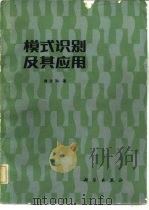
- 模式识别及其应用
- 1983 北京:科学出版社
-

- 智能计算中的算法、原理和应用
- 2020
-

- 智能卡技术与应用
- 1995
-

- 中草药的识别与应用
- 福建省农函大教材编委会
-

- 接触
- 1997.12 講談社
-
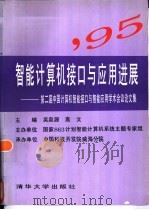
- 智能计算机接口与应用进展 第二界中国计算机智能接口与智能应用学术会议论文集
- 1995 北京:清华大学出版社
-
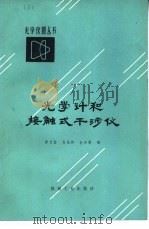
- 光学计和接触式干涉仪
- 1981 北京:机械工业出版社
-
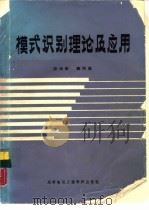
- 模式识别理论及应用
- 1985 成都:成都电讯工程学院出版社
-
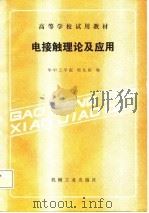
- 电接触理论及应用
- 1988 北京:机械工业出版社
-

- 非接触密封 间隙密封与迷宫密封的原理和应用
- 1986 北京:机械工业出版社
-
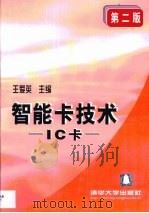
- 智能卡技术
- 1996 北京:清华大学出版社
-
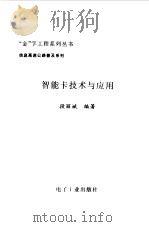
- 智能卡技术与应用
- 1995 北京:电子工业出版社
-
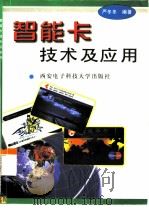
- 智能卡技术及应用
- 1998 西安:西安电子科技大学出版社
提示:百度云已更名为百度网盘(百度盘),天翼云盘、微盘下载地址……暂未提供。➥ PDF文字可复制化或转WORD

